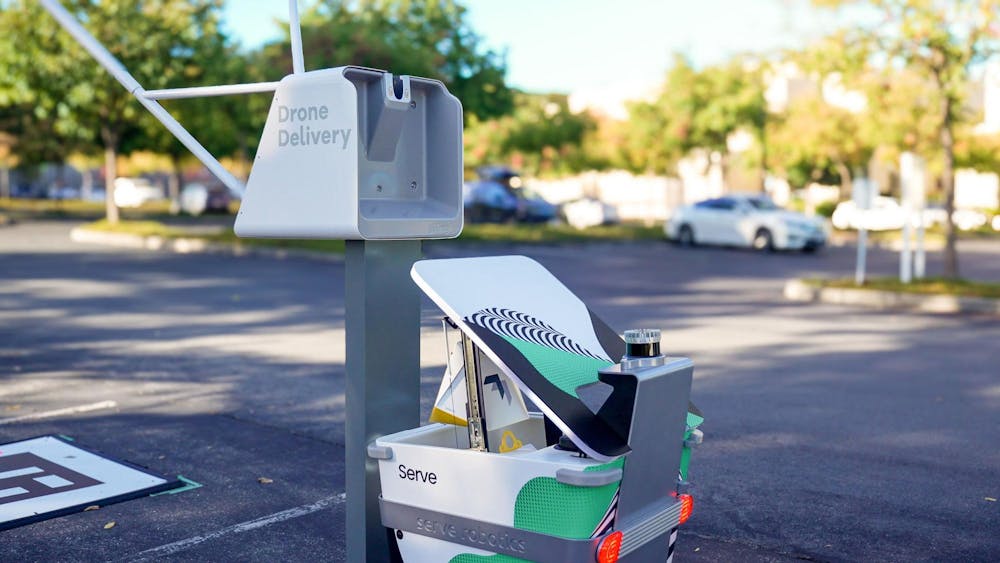A few weeks ago, while passing by the Indiana Memorial Union, I noticed something: a white box rolling on some wheels down the sidewalk. I was initially confused but quickly remembered that I saw something similar when I was in Los Angeles for the IU football game in September.
After some research, I learned that they’re food delivery robots, with the one in Los Angeles owned by Serve Robotics and the one in Bloomington owned by Avride. I was shocked that they’ve been active since 2017 on the West Coast and have slowly crept worldwide, with different companies taking a slice of the pie.
The implications of a robot delivering food may not seem significant initially, but after more consideration, they may be. To me, a robot rolling around unsupervised spells logistical nightmares. The robots look like they would be prone to vandalism when they leave a restaurant. This has already happened in Los Angeles. Another robot delivery company, Starship, says they use cameras and loud sirens as a deterrent against vandals.
Though it may be rare, an expansion worldwide could pose significant safety challenges in the future. If vandalization of these robots happens, the restaurants have to remake the food, though in the case of Serve, the restaurants are reimbursed if they have to remake an order.
There’s another logistical challenge to this: –what if the robot needs help getting to its drop-off location? Serve Robots has programmed its robots to find the most optimal route, but what if a street or sidewalk is closed or the terrain is bumpier than expected? Behind the scenes, a human can assist it as needed, and it has sensors used to navigate obstacles. Will this be enough, though? Imagine one of these robots trying to navigate the construction that was going on outside of the sample gates or going on the sidewalks that are closed near Wright Quad.
Currently, Serve Robots is making this technology available to places other than the West Coast, so we’ll see if these robots have difficulty navigating other parts of the world.
Other problems with these robots may also affect us. Every year, movies come out about robots trying to take over humanity. Now, I don’t think these innocent-looking boxes with a smile on the front of them will accomplish this science fiction scenario, but it does show how quickly these things get integrated into our lives. These delivery robots have been around since 2017, and suddenly, I’ve seen two in under two months. Uber Eats robots have even shown up in Japan, however not under the banner of Serve Robots.
Increased use of delivery robots could also lead to a loss of jobs. Food delivery is traditionally a human job, but it’s soon becoming possible that many will be out of work.
A recently published paper, “Robots and Jobs: Evidence from U.S. Labor Markets," by Massachusetts Institute of Technology professor Daron Acemoglu, shows how robot workers hurt human labor.
Researchers found that adding robots to the U.S. workforce lead to declines in wages and the loss of about 400,000 jobs.
In Britain, there are fears of food robots taking jobs. In this article Ahmed Uhuru Hafezi from the Couriers Branch of the Independent Workers Union of Great Britain believes that for robot delivery to succeed, these companies need to work alongside unions and their workers. As delivery robots become more common across the world, as I expect them to, we’ll likely see more of these conversations arise.
I’m not one to believe that robots and humans can’t coexist. I think they can benefit society in many ways. We do have to be careful, though, because if not handled properly, problems can and will happen. So, if you see one of these cute-looking robots around campus, laugh like I did, but understand what it can mean for our future.
Jack Davis (he/him) is a sophomore studying journalism.





